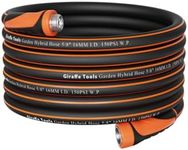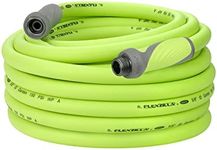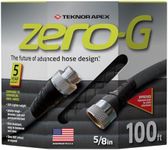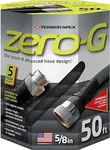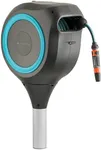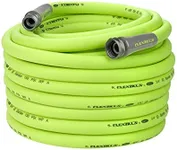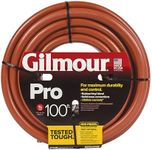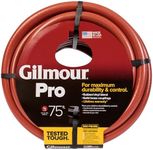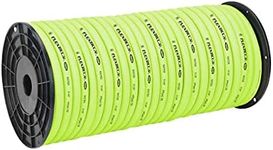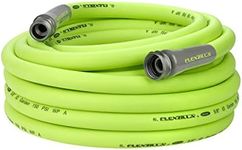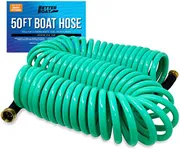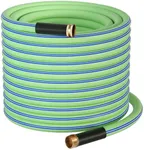Buying Guide for the Best Water Hoses
Choosing the right water hose can make a big difference in your gardening, cleaning, or any other outdoor activities. The right hose will be durable, easy to use, and suitable for your specific needs. To make an informed decision, you should consider several key specifications. Understanding these specs will help you find a hose that fits your requirements perfectly.LengthThe length of a water hose is crucial because it determines how far you can reach with it. Hoses typically come in lengths ranging from 25 feet to 100 feet. If you have a small garden or need a hose for washing your car, a shorter hose (25-50 feet) might be sufficient. For larger yards or more extensive watering needs, a longer hose (75-100 feet) will be more appropriate. Consider the distance from your water source to the farthest point you need to reach to choose the right length.
DiameterThe diameter of a hose affects the water flow rate. Common diameters are 1/2 inch, 5/8 inch, and 3/4 inch. A 1/2 inch hose is suitable for light watering tasks and is easier to handle. A 5/8 inch hose is the most versatile and provides a good balance between water flow and ease of use. A 3/4 inch hose offers the highest flow rate, ideal for heavy-duty tasks like filling a pool or large-scale irrigation. Choose a diameter based on the intensity of your watering needs.
MaterialWater hoses are made from various materials, including vinyl, rubber, and reinforced materials. Vinyl hoses are lightweight and affordable but may not be as durable. Rubber hoses are more durable and flexible but can be heavier and more expensive. Reinforced hoses combine the benefits of both, offering durability and flexibility. If you need a hose for occasional use, vinyl might be sufficient. For frequent use or heavy-duty tasks, consider rubber or reinforced hoses.
FlexibilityFlexibility is important for maneuvering the hose around obstacles and storing it easily. Some hoses are more flexible than others, which can make them easier to use but also more prone to kinking. Look for hoses labeled as kink-resistant if you need a flexible hose that won't easily tangle. If you have a lot of obstacles in your yard or need to store the hose in a compact space, prioritize flexibility.
CouplingsCouplings are the connectors at the ends of the hose that attach to the water source and spray nozzle. They can be made from plastic, aluminum, or brass. Plastic couplings are lightweight and inexpensive but may not be as durable. Aluminum couplings are more durable but can be prone to corrosion. Brass couplings are the most durable and resistant to corrosion, making them ideal for long-term use. Choose couplings based on the durability you need and how often you plan to use the hose.
Burst PressureBurst pressure indicates the maximum pressure a hose can withstand before bursting. It is measured in pounds per square inch (PSI). For typical home use, a hose with a burst pressure of 200-300 PSI is usually sufficient. If you plan to use the hose with high-pressure water sources or for heavy-duty tasks, look for hoses with higher burst pressure ratings. Consider the water pressure in your area and the tasks you will be performing to choose the right burst pressure.
